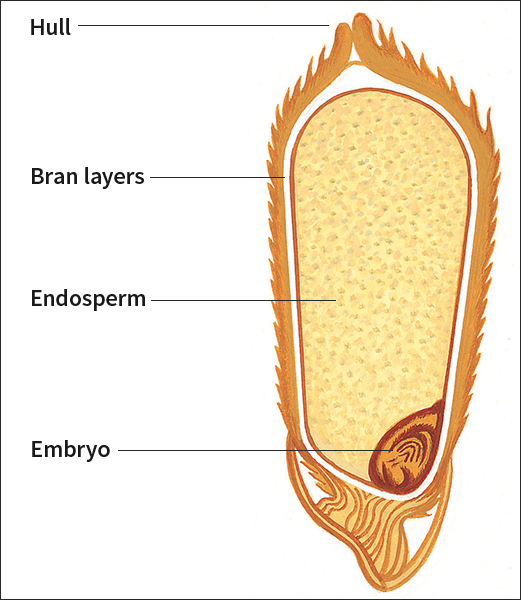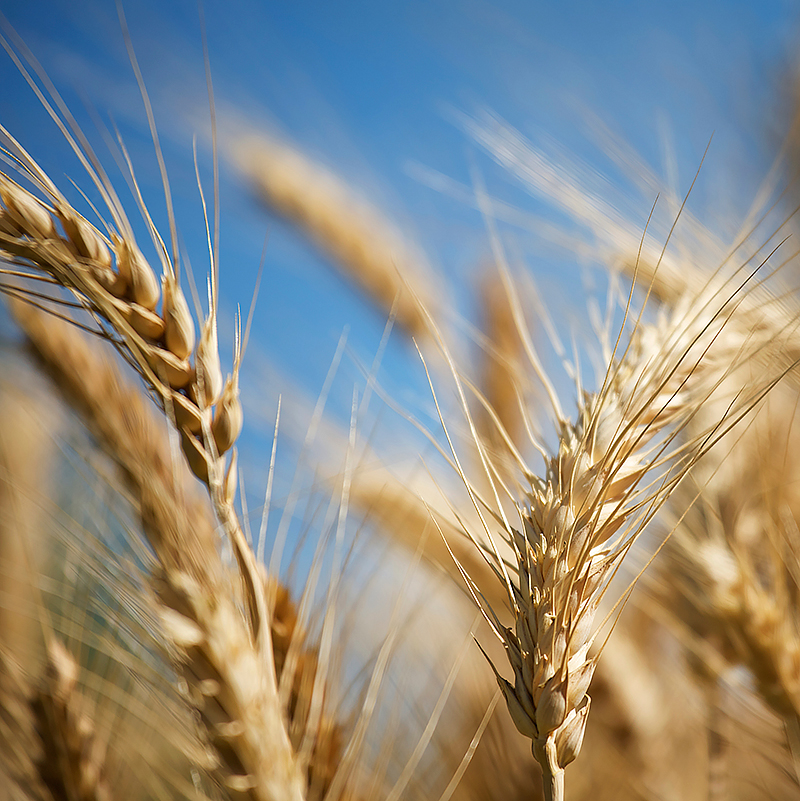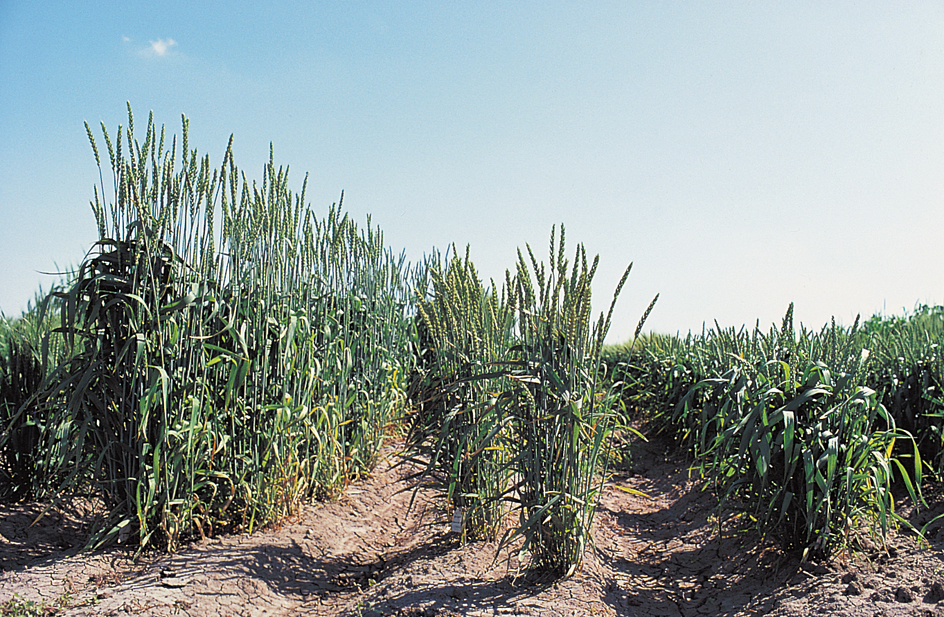Grain is any of several cereal plants that rank among the most important food crops. These plants include corn, wheat, rice, and other grasses commonly called cereals or cereal grains. Their high starch content makes them an excellent source of food energy. The term grain also refers to the seed produced by the cereals.

The most important grains, in order of world production, are corn, rice, wheat, barley, sorghum, millet, oats, and rye. Farmers and scientists have developed many varieties of each grain.
Uses.
People use grain for two chief purposes—as food for themselves and as livestock feed.
As food.
Some kinds of grain are eaten after simply being cooked. But grains generally are milled and then further processed into flour, meal, syrup, oil, starch, or some other form. These substances serve as important ingredients of such food products as bread, breakfast food, and cooking oil.

Wheat and rice rank as the world’s chief food grains. Most wheat is ground into flour and used for making bread, other baked goods, and pasta. Most rice is eaten as boiled, white grain. The use and importance of various grains differ from one part of the world to another. For example, rice is the main food of about half the world’s people, including most Asians. In comparison, Europeans and North Americans eat little rice.
As livestock feed.
Any grain can be processed into feed. Grains widely used as feed include barley, corn, oats, sorghum, and wheat. About a third of the world’s grain crop is used as livestock feed. Most farmers in countries with advanced agricultural technology feed their livestock both farm-grown grain and commercially prepared mixed feed. Feed manufacturers make mixed feed by combining grain or grain by-products with vitamins, drugs, proteins, and other ingredients.

People indirectly eat grain fed to livestock when they drink milk or eat meat, eggs, and other foods produced by those animals. In the industrialized countries, people eat by far the greatest amount of grain indirectly. But most of the world’s people eat grain directly because they do not have enough food to feed grain to animals.
Other uses.
Many alcoholic beverages are made from grain by a process called fermentation. In this process, yeast or bacteria change grain starch into alcohol. Manufacturers also make a food product called malt by special processing of barley and other grains. Malt is used in the production of beer and as a food flavoring.
Hundreds of industrial products contain grain by-products or parts of grain. For example, manufacturers use starch from grain to stiffen paper and fabrics. They also use starch in making cosmetics, drugs, explosives, and pastes. Chemical companies ferment cornstarch to produce an alcohol called ethanol, which can be used as a gasoline additive to improve the fuel’s performance. Chemical companies also mix grain parts with acid to make furfural, a chemical used in making plastics and in refining certain petroleum products (see Furfural ).

History.
The origin of some cereal grains is more fully understood than that of others. Some developed from wild plants that grew long before history began. Scientists believe people in the Middle East started to domesticate some of these plants for use as food more than 10,000 years ago.
Various grains probably developed in different parts of the world. For example, scientists believe wheat and barley may first have been cultivated in the Fertile Crescent region of the Middle East. Corn probably originated in what is now Mexico.
